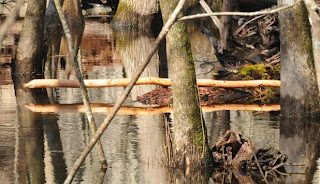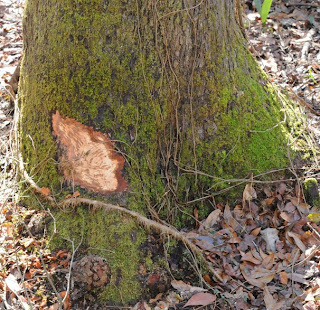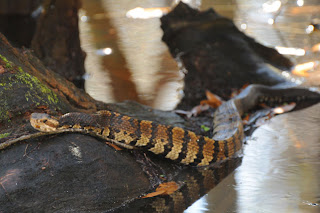

When a beaver gnaws on a tree or a branch, it is not eating everything. The large branch may eventually make it to the dam/lodge complex in the powerline right-of-way as it is an appropriate size, but the bark has been removed (not eaten) and the cambium has been consumed. The same fate befell the smaller branch. All the wounds on the trunks of various tree species have bark shavings below, the cambium consumed, and the interior portion of the tree untouched. Only the cambium, the living cells connecting the leaves with the roots and serving as the avenue for the transportation of water and nutrients throughout the tree. This is the delicious, nutritious part of the tree sought after by the beavers. If a beaver gnaws completely around the tree, it will girdle the tree and cut the connection between the leaves and the roots. A girdled tree will inevitably die. We're guessing that an inexperienced beaver began gnawing on the Loblolly Pine and that its gummed up mouth caused it to stop!



The beavers were not the only animals becoming active with the warmer, sunnier weather. Right out the nature center, Spotted Turtles (Clemmys guttata) were basking on logs in the shallow water outside of the main flow of the swamp. Where the boardwalk forks at the swamp's edge, an Eastern Cottonmouth (Agkistrodon piscivorus piscivorus) was partially out of the water and on a log. At Goodson Lake, a Yellow-bellied Slider (Trachemys scripta scripta) was warming in the sun and possibly causing leeches to disembark. Finally, rounding the last curve in the boardwalk before the fork, a male Hooded Merganser (Lophodytes cucullatus) was busy taking a bath in the shallow water at the swamp's edge.





No comments:
Post a Comment